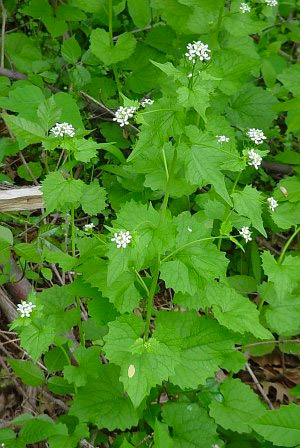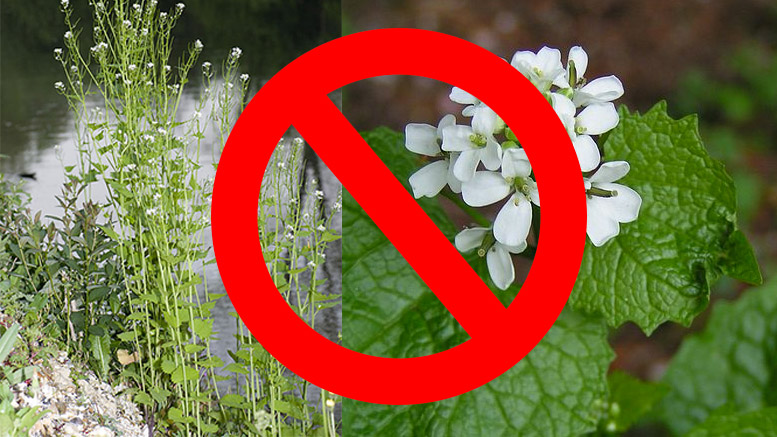Have you weeded out YOUR garlic mustard today?
Garlic mustard is the bane of many a gardener’s existence.
It’s also terrible for bees and butterflies.
The native spring plants that garlic mustard can push out include spring beauty, trout lily, jack-in-the-pulpit, violets, and golden ragwort. The mustard “aggressively monopolizes light, moisture, nutrients, soil and space. Wildlife that depends on these early plants for their foliage, pollen, nectar, fruits, seeds and roots, are deprived of these essential food sources when garlic mustard replaces them.” (Source: http://www.fosc.org)
What is garlic mustard?
Garlic mustard has small white flowers and heart-shaped, toothed leaves. Young crushed leaves smell like garlic or onion.
Garlic mustard is an invasive non-native biennial herb that spreads by seed. Although edible for people, it is not eaten by local wildlife or insects. It is difficult to control once it has reached a site; it can cross-pollinate or self-pollinate, it has a high seed production rate, it out competes native vegetation and it can establish in a relatively stable forest understory. It can grow in dense shade or sunny sites. (Source: KingCounty.gov)
Did you know that these invasive weeds are also crowding out our native wildflowers?
So if you see this weed around, do a wildflower, a bee, or a butterfly a favor, and pull it.
Do not put it in your yard waste! Please put it in your trash!
For more information on how to identify or to get help, visit https://www.wildcohasset.org.
If you see this weed, pull it out!

Garlic mustard. Photo courtesy fosc.org.







Be the first to comment on "Have you weeded out YOUR garlic mustard today?"